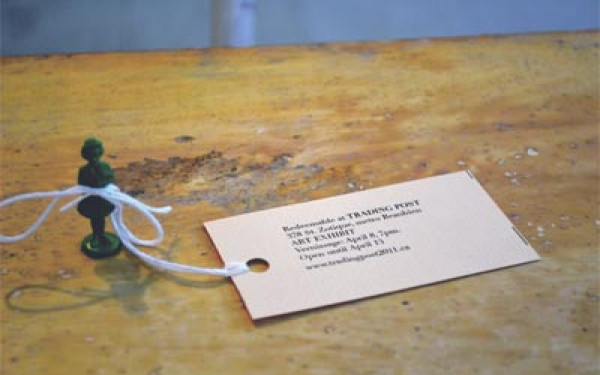Taking Part in the Journey
Concordia University’s ARTX 480 class takes over St. Henri this week with its end-of-the-year student exhibition It Matters How You Get Here.
The advanced studio art class has been very important for guiding the creation of works that delve into theoretical and philosophical topics, and is very different from more traditional fine arts classes.
The class also deals with a broad range of mediums and attracts a diverse group of students from a variety of artistic backgrounds.
“We need community to do this sort of work because there isn’t a lot of history that we can rely on, and we really need each other to have these kinds of conversations,” said ARTX 480 student Ramona Benveniste.
ARTX is very important for preparing students for the perpetually changing art scene while teaching them how to effectively communicate ideas through their art.
“It’s a good opportunity for all of us to take a good look at why we are engaged in art practice in the 21st century,” said Benveniste. “Is it really about making objects and products and following the history of the art world? Can we bring the issues that we’re thinking about, that we’re making work about, outside and start communicating [them to people] outside of the art world?”
The name of the exhibition, It Matters How You Get Here, alludes to the time and personal exploration it takes for artists before they can successfully express ideas through art.
“This is a very process-oriented class in the first place, and the way [the students] were working was very process-oriented,” ARTX 480 instructor Jessica MacCormack said.
_900_600_90.jpg)
Unlike many museum art experiences, much of the exhibition is tactile. The tactility of the exhibition is somewhat consistent with St. Henri’s history.
The industrialization of the area saw an evolution from leather-tanning industries to textile factories and other manufacturing.
Besides their interactive aspect, many of the works themselves reflect history as well. Sandra Chirico’s “Heirloom Factoria” is an installation of uniforms from fascist Italy, an era that led to the mass immigration to Canada and stimulated the sewing industry in Montreal.
As an area that was home to mass labour, “the masses” is a strong theme throughout the exhibition. In “Putsch,” artist Emy Gagné St-Laurent says, “We may be small, but we are together.”
This theme of collectivity is represented by a group of toy-sized rodents devouring a larger, unidentified beast. A reversal of prey and predator, “Putsch” sends a clear message about power in numbers.
Although not all of the works are based on the history of the area, they are integrated in the spaces, which include a pool change room, a community centre, a storefront, the park and the street, as well as online. There is a strong need for students’ works to find a balance with the spaces so the two are harmonious.
“Different kinds of art are able to flourish in [the exhibition location] and it makes sense to travel to the different spaces and be transported to different interpretations of the neighbourhood,” said Chirico.
“It’s not about getting it right or wrong,” said MacCormack of her class’s objectives. “Putting it out there in the world is just the beginning point. You can keep working these projects, you can be working them for years.
“[The show] is just the beginning point.”
For more information visit the exhibition’s website.
It Matters How You Get Here / Until April 9 / 4619 Notre-Dame St. W. / Free

_900_600_90.jpg)
_900_600_90.jpg)

3__600_375_90_s_c1.jpg)

6_600_375_90_s_c1.jpg)